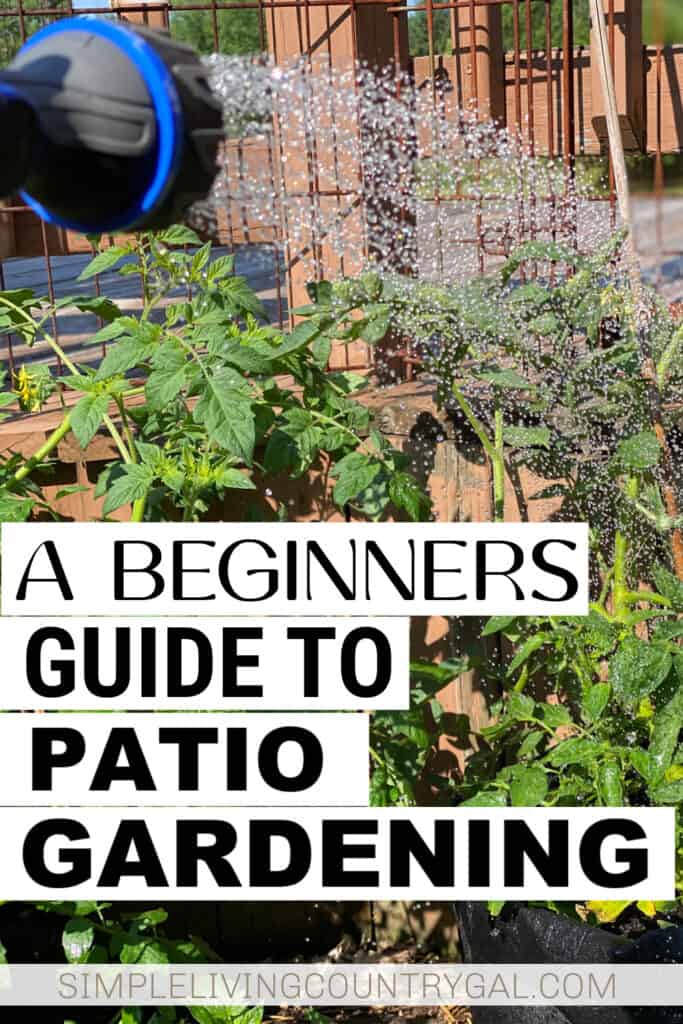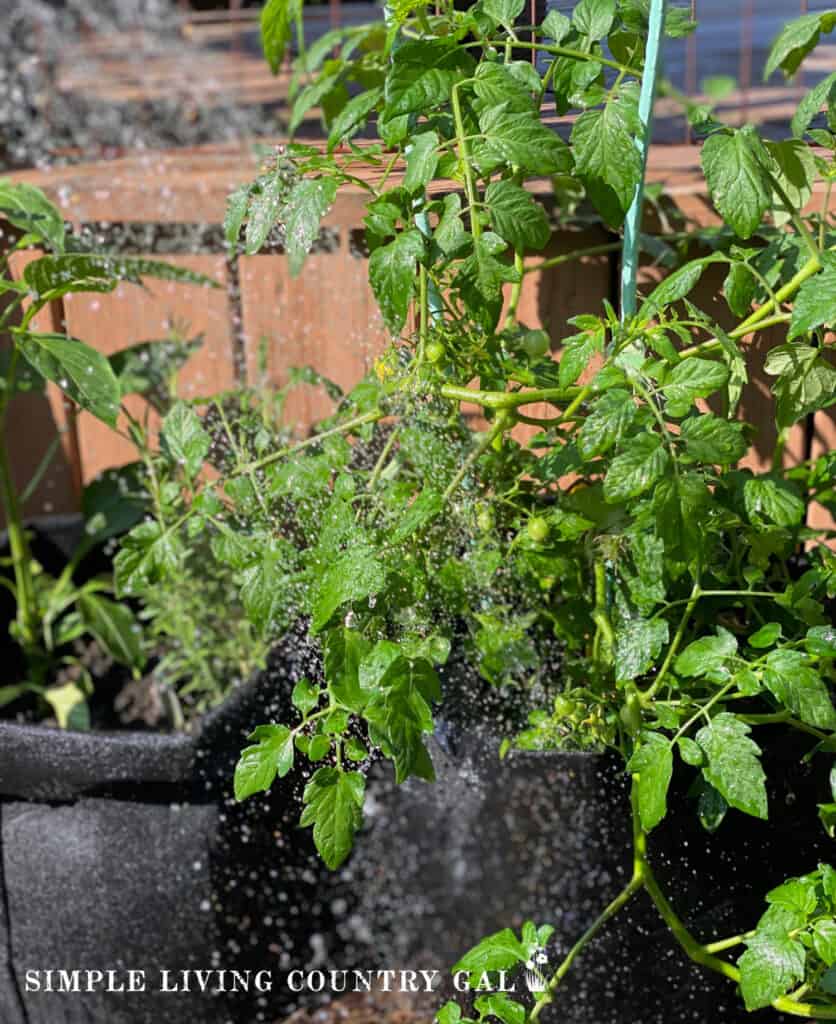patio gardening for beginners
If you long to have a backyard garden but are unable to do so in the traditional way, then this guide on patio gardening for beginners will help you create a plan B. Grow all the veggies you love right outside your kitchen door.
Gardening 101 for all setups so you can find the one that fits your lifestyle and where you live best.

Growing a garden is a great way to enjoy fresh foods at any time, but not everyone is able to grow a traditional garden. Whether it be a lack of space, shortage of time, or physical limitations, finding alternative ways to grow your veggies will allow you to get back to growing. One of my favorite ways to garden is using containers because it allows me to raise my garden up, reducing the strain on my sore back. This article will guide you through patio gardening for beginners so you can create a setup that works for you.
An effortless way to homestead with tips on how to start a backyard garden an easier way.
What is patio gardening?
Patio gardening is essentially growing plants, vegetables, and herbs in containers or pots on your patio, balcony, or any small outdoor space you have. This method of gardening has become increasingly popular over the years as it offers a convenient way to grow your own food without needing a large backyard or garden space. It also allows for greater flexibility and mobility as containers can be easily moved around to find the best growing conditions for your plants.
Choosing the right setup
Before starting your patio garden, you will want to consider which setup will work best for you. First, assess your patio area. Is it sunny, shady, or a mix of both? This will help determine which plants will thrive in your space. With containers, you can easily move them around to find the ideal amount of sunlight for each plant.
Next, think about how much space you have and how many plants you want to grow. You can choose from individual pots or larger containers that can hold multiple plants. Hanging baskets and vertical planters are also great options for maximizing space.
Selecting the right containers
When it comes to choosing containers, the most important thing is to ensure they have proper drainage holes at the bottom. This will prevent water from pooling and causing root rot. You can also consider using self-watering pots or adding a layer of rocks or pebbles at the bottom of your containers for better drainage.
The material of the container is also important. Clay pots are a popular choice as they allow for better air circulation and can help regulate soil moisture. However, they can be heavy and may require more frequent watering. Plastic pots are lightweight and often have built-in drainage holes, but they may retain heat, which can dry out plants faster.
Gardzen 10-Pack 25 Gallon Grow Bags, Aeration Fabric Pots with Handles


Soil Prep
Choosing the right soil is crucial for a successful patio garden. You will want to use a high-quality potting mix that is specifically formulated for container gardening. This type of soil contains essential nutrients and has good drainage to ensure proper root growth.
Plant Selection
When selecting plants, consider their height, spread, and growth habits. Mix in some taller plants with climbers or hanging plants to create a lush and visually appealing space. You can also choose plants that have different blooming periods to ensure continuous color throughout the season.
Herbs, vegetables, and fruits are also great options for patio gardens. Many herbs like basil, rosemary, and thyme can thrive in containers. For vegetables, consider compact varieties such as cherry tomatoes or peppers. Strawberries and blueberries are great choices for fruit lovers.
More Herb Growing Guides:
Disease Prevention and Control
To prevent these issues, make sure to keep your plants clean and well-maintained. Remove dead or diseased leaves promptly and monitor for any signs of insect infestations.
If you do encounter a pest problem, try using natural solutions such as neem oil or diatomaceous earth. These options are safe for plants and the environment.
Maintaining Your Garden
Proper watering is essential for a healthy patio garden. Make sure to water your plants thoroughly but not excessively. You can check the soil moisture by sticking your finger an inch or two into the soil – if it feels dry, it’s time to water.

Fertilizing is also important for container gardening since nutrients can quickly deplete in small spaces. Use a slow-release fertilizer or a liquid fertilizer every few weeks to keep your plants well-nourished.
Harvesting and Storage
One of the great joys of patio gardening is being able to harvest your own fresh produce right from your own space. When it comes to harvesting, make sure to pick fruits and vegetables at their peak ripeness for the best flavor.
If you have excess produce, consider freezing, canning, or drying it for future use. This will help you enjoy your homegrown fruits and vegetables even during the off season.
Patio gardening for beginners is a rewarding and enjoyable way to grow the food you love. Create a garden that gets plenty of sun, use the right containers, and follow the growing guides, and you can fill your freezer and pantry with a supply of homegrown goodness.




